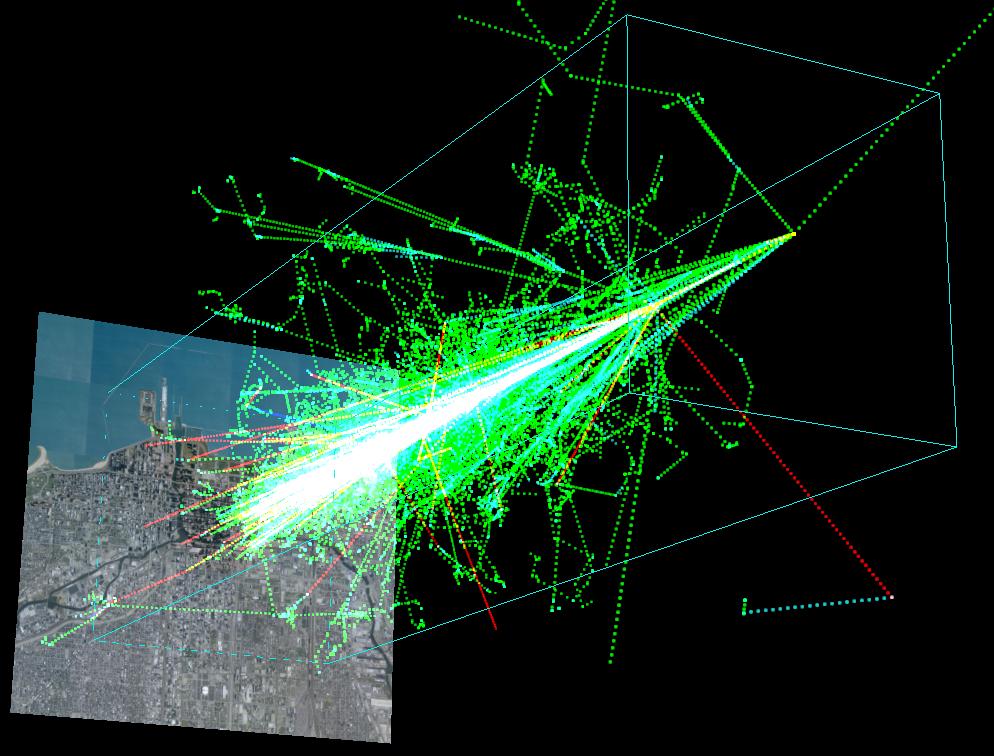ICHEP has ended, and while there were no truly stunning revelations at this conference it’s clear that a lot of great research is going on right now. The turn on of LHC is a nail-biter for everybody, inside and outside the experimental physics community. The launch of GLAST is seen as a welcome explosion of new data and the first time the use of gamma rays to probe everything from sources to dark matter has seen an order-of-magnitude leap in a while. I’ll here highlight a few notable items, from my perspective, in the last few days of plenary sessions.
Duality
The idea of duality in nature, and in theories of nature, is not new. The wave-particle duality is a good example. Often cited as “quantum weirdness”, the wave-particle duality is quite simple: sometimes the things we call electrons behave like waves (interference, for instance), and at other times like particles (scattering, for instance). All particles . . . er, waves . . . exhibit this behaviour. I’ve always looked at this two ways. Either we’ve mis-used language in describing nature – we were fooled into thinking nature could be easily divided into particle-like and wave-like things, and that came back to bite us. Or, we are simply employing mathematical conveniences to describe nature without actually knowing the underlying phenomenon. However you look at it, the wave-particle description of matter is phenomenally successful.
Duality also appears in string theory, in the form of “dual theories” of string theory. One of the problems with string theory about 20 years ago was that there were five equally valid versions of string theory. That meant that there were five valid mathematical descriptions of the string theory universe. Which one was right? Was each describing its own universe?
The resolution to this problem was duality. It was found that through mathematical transformation, one could relate calculations in one theory to those in another. In fact, duality proved quite useful. In some of the string theories, computations of the same quantities were much easier than in others. To do your calculation, you just performed it in one theory and then transformed into the one you were interested in.
Duality is appearing a new place: the quark-gluon liquid formed at the Relativistic Heavy Ion Collider (RHIC), which I flew over while writing this article. Some clever work, using string theory to compute some of the measured quantities of the quark-gluon liquid. In fact, one speaker said that the quark-gluon liquid can be mathematically treated much like a string theory plus a black hole. So, in a way, RHIC is making black holes – in the minds of the theorists trying to make sense of this data, the closest duality is computations in a string theory with a black hole.
Dark Matter and DAMA
The dark matter speaker spent a lot of time trying to defend the WIMP hypothesis and DAMA’s claim of a time-varying signal. I thought this was a little odd, since she could have instead spent four or five slides on the excellent solid, liquid, and gas technologies being brought to bear on direct detection of dark matter. Instead, it seems like some people try to act like apologists or critics of DAMA when they give big talks like this. Seems like it would be better to focus on the multiprong strategy for attacking the dark matter puzzle than a posteriori reverse engineering a single experiment. Look at MiniBoone and LSND, for instance.That’s a good example of a forward-looking experiment with an eye to test an old experiment while creating their own new results.
To be fair, the speaker did spend time on the future. But four slides in a 30-min. talk is a big deal.


